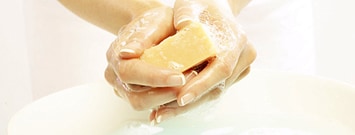
Handwashing is easy to do and it’s one of the most effective ways to prevent the spread of many types of infection and illness in all settings—from your Home and Workplace to child care facilities and Hospitals. Clean hands can stop germs from spreading from one person to another and throughout an entire community.
Learn more about when and how to wash your hands.
When should you wash your hands?
- Before, during, and after preparing food
- Before eating food
- Before and after caring for someone who is sick
- Before and after treating a cut or wound
- After using the toilet
- After changing diapers or cleaning up a child who has used the toilet
- After blowing your nose, coughing, or sneezing
- After touching an animal, animal feed, or animal waste
- After touching garbage.
What is the right way to wash your hands?
- Wet your hands with clean, running water (warm or cold), turn off the tap, and apply soap.
- Lather your hands by rubbing them together with the soap. Be sure to lather the backs of your hands, between your fingers, and under your nails.
- Scrub your hands for at least 20 seconds. Need a timer? Hum the “Happy Birthday” song from beginning to end twice.
- Rinse your hands well under clean, running water.
- Dry your hands using a clean towel or air dry them.
Take care of your hands
Hand-washingis only one part of hand hygiene. Looking after your skin generally is important, as your skin is the perfect barrier against infection.
- Apply a water-based absorbent hand cream three to four times a day, or more frequently if your hands are constantly in water.
- Use gloves to wash dishes to protect your hands.
- Use gloves when gardening to prevent a build-up of ingrained soil or
scratches. - Consult a doctor if a skin irritation develops or continues
Please enjoy the Wash ‘ em ” Hand Hygiene Music Video “
